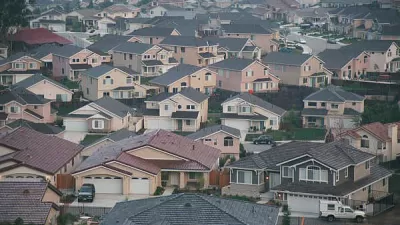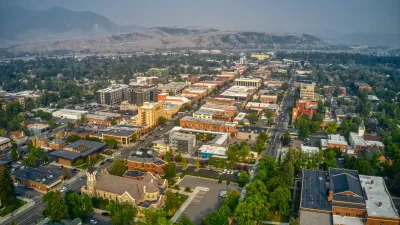The perception that a city has reached its maximum population and nobody else should be allowed in, or nothing should be allowed to change, is limiting the potential of our cities and increasing housing inequality.

Emily Badger of The Washington Post's Wonkblog tackles the question of how we determine when a city just can't take any more people by comparing our densest cities with those around the world, and discovering we're not necessarily as dense as we think. Further, an increase in population in one area results in economic and environmental benefits.
"Put more and more workers in one place, meanwhile, and you also get buzzing hubs like New York's Garment District or Boston's biotech corridor, where people working on the same problems bump into each other and share ideas and suppliers and become more productive. Put more people in a city, and the economy grows. It's the opposite of diminishing returns. The environmental costs, per person, can actually improve. In drought-stricken California, some of the lowest water consumption per capita is in San Francisco."
Badger notes that the use of environmental laws by NIMBYs, particularly in California, has led to greater economic inequality. The cost of housing has continued to rise as residents have blocked new housing, thereby limiting the supply for newcomers and stopping the natural evolution of our cities.
FULL STORY: There is no such thing as a city that has run out of room

Planetizen Federal Action Tracker
A weekly monitor of how Trump’s orders and actions are impacting planners and planning in America.

San Francisco's School District Spent $105M To Build Affordable Housing for Teachers — And That's Just the Beginning
SFUSD joins a growing list of school districts using their land holdings to address housing affordability challenges faced by their own employees.

The Tiny, Adorable $7,000 Car Turning Japan Onto EVs
The single seat Mibot charges from a regular plug as quickly as an iPad, and is about half the price of an average EV.

Seattle's Plan for Adopting Driverless Cars
Equity, safety, accessibility and affordability are front of mind as the city prepares for robotaxis and other autonomous vehicles.

As Trump Phases Out FEMA, Is It Time to Flee the Floodplains?
With less federal funding available for disaster relief efforts, the need to relocate at-risk communities is more urgent than ever.

With Protected Lanes, 460% More People Commute by Bike
For those needing more ammo, more data proving what we already knew is here.
Urban Design for Planners 1: Software Tools
This six-course series explores essential urban design concepts using open source software and equips planners with the tools they need to participate fully in the urban design process.
Planning for Universal Design
Learn the tools for implementing Universal Design in planning regulations.
Smith Gee Studio
City of Charlotte
City of Camden Redevelopment Agency
City of Astoria
Transportation Research & Education Center (TREC) at Portland State University
US High Speed Rail Association
City of Camden Redevelopment Agency
Municipality of Princeton (NJ)





























